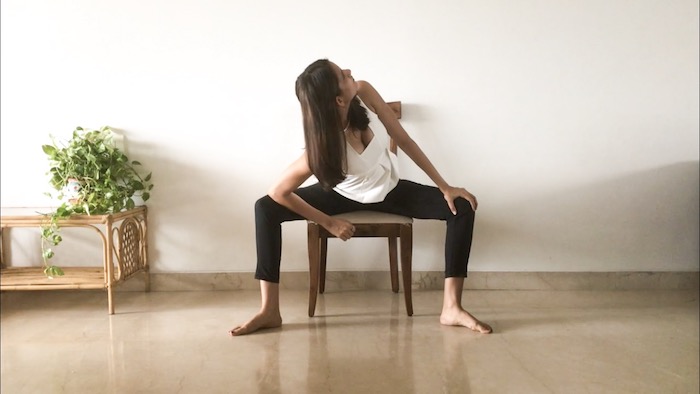Today we live in a high-stress environment where we often have a lot of things to finish in very little time. Long sitting hours, bad posture, repetitive stress on the joints, excessive use of electronics and mental stress due to a fast-paced life are taking their toll on our health. That is why it is extremely important to regularly make time to de-stress, relax and re-energize. While there are many methods to do that – Yoga is one of the most powerful and effective ways.
Often, people think that yoga is an intricate routine where one has to be really flexible and do complicated things with the body. But that’s not true, the purpose of yoga practices is not to become super bendy or stand on our head all day long…their main objective is to be relaxed and calm in body and mind. The primary goal of hatha practices was to energize without creating tension and to relax without resulting in dullness. It is this precarious midpoint of balance which prepared a yogi to finally focus the mind and meditate. That was the reason yoga was practiced and that is why it can be of tremendous help to all of us in this highly anxious world.
In this article, I’ll share with you some simple techniques that can be employed at work to ensure we stay healthy, productive and stress-free.
Tip #1: Keep changing your posture
Our best posture is our next posture. We get so absorbed in work that we lose track of time and our body and end up staying in the same position for hours. It’s not good for our joints, it is bad for circulation and tends to make our mind dull. That’s counterproductive towards whatever it is that we’re trying to work on. So, let’s move often and change our posture throughout the day.
Tip #2: Adjust your workstation
Good alignment means less wear and tear in our joints and surrounding tissue. Body tissues do deteriorate with age, that is inevitable. But if we use them well with maximum efficiency, they will last us longer. So, while sitting in the office try to adjust your position such that:
- You’re sitting at the back of the chair and not the edge
- Knees should be at 90 degrees and thighs well rested on the chair
- Feet should be flat on the floor – use a box or a stool to support
- Elbows should be at 90 degrees and your computer or laptop should ideally be at eye level.
Tip #3: Do counter-movements
When we work in an office environment there are six key areas that we either overstrain or underuse. We’re constantly hunched over our workstations, staring at backlit screens, typing and using the mouse frequently and sitting on a chair for hours on end. All of this has many repercussions, but let’s focus on the five prime areas.
- Neck and Shoulders (Upper Back): Excessive computer and mobile phone use have created the proverbial ‘iHunch’ position where our neck is always hanging forward out of alignment with our spine. For the neck, we should do the traditional neck movements like looking side to side or ear to shoulder. For the shoulders and upper back, the best methods are shoulder stretches, side bends, and spinal rotation. Here’s a video on how to release the shoulders.
- Eyes: It is so important to rest the eyes as we’re constantly staring at one screen or another. A good way to do so is by blinking a few times and looking away from the screen. Head over to the balcony or a window and look out into the distance. If you have access to a garden, looking at greenery is very therapeutic for the eyes. Most of all practice palming – rub the palms together to generate some heat and then cup the eyes with your palms, letting them relax in the warmth and darkness. Open your eyes with a few gentle blinks, looking directly at your palms. Do not directly look at bright lights when coming out of this exercise.
- Wrist: Wrists bear the brunt of excessive typing and computer usage. Inherently weak wrists with repetitive stress due to the same movements over and over again creates a lot of damage in this delicate joint. It is very important to strengthen them as well as stretch them after a hard day’s work. Here are a few stretches that can be practiced, however, do not continue if you feel any pain or discomfort. Always seek medical advice in case of pain.
- Hips and legs: Sitting all day long makes our core and lower body muscles very weak. Hip flexor muscles like the Psoas can also become short which can create lower back pain. In the case of hips, prevention is better than cure, so make time to get up and move around throughout the day. Even if it is just to take one stroll around the office and then coming back to your desk. We can also practice the figure four stretch to release the glutes. Here are some more stretches for the lower body.
- Lower back: This is one of the most frequently reported problems of our times. It is highly debilitating and one of the best remedies for it is gentle mindful walking on an unpaved but smooth surface. Backbends like Bhujangasana and Shalabhasana are generally good for lower back issues but are difficult to practice at work. A good alternative is the cat cow breathing which can be easily done at work.
- Core: A weak core is yet another contributory factor towards lower back pain. The best way to strengthen the core while at work is to sit upright, it automatically engages the area. Lifting one foot off the floor and putting it back down while maintaining a straight spine is also a great way to strengthen our core.
Tip #4: Breathe correctly
Once we’ve corrected the posture it is far easier to breathe properly. A straight spine, without any hunch, gives our lungs sufficient space to expand with every breath. Thumb rule of breathing is to expand the lungs as we breathe in and contract as we breathe out. This means when we inhale, air fills up space in our lungs so rib cage and belly will rise up. When we exhale, all waste material is being emptied out – so the body will contract. Often, we breathe in the reverse manner which is inefficient and does not provide sufficient oxygen to the body. To get better and breathing correctly, take time out three to four times a day to do deep belly breathing 10 to 15 times. Just ensure you don’t do this immediately after meals. It can be hard on a full belly.
Tip #5: Make times for some silence and stillness
We are constantly engaged in mental and physical activity – and it is incredibly refreshing if we simply step back and take a break for a few mins every once in a while. Here’s a good practice – for three minutes, every three hours, do nothing. Simply close your eyes and sit back. Or rest your head on the table and disconnect. It is the least we can do for our body and mind – as they work so hard for us. Here’s a video with some simple techniques that you can practice at work to de-stress and re-energize.
So, to briefly recap – keep moving, adjust your workstation, counter repetitive movements, breathe correctly and take time to rest and relax. Your body will be grateful for it.







